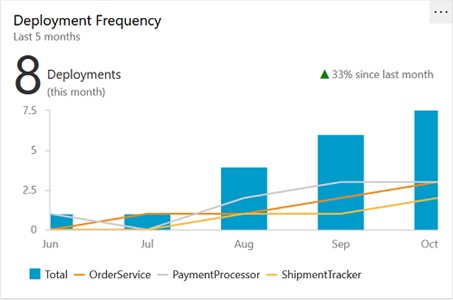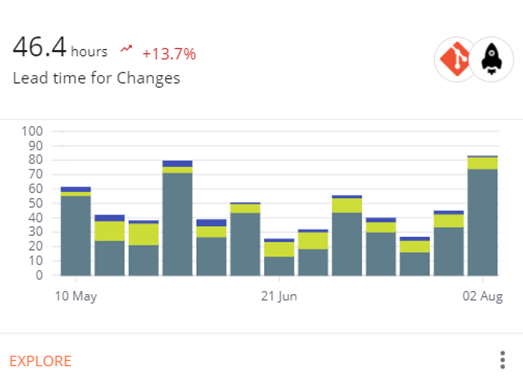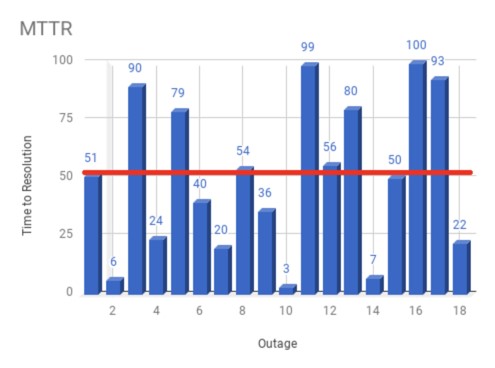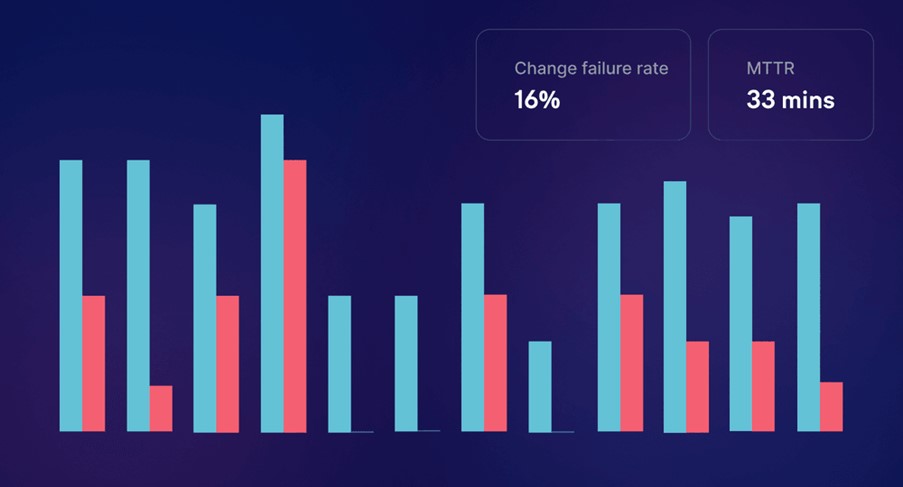DevOps Research and Assessment (DORA) has identified four key metrics that play a pivotal role in gauging the success of software delivery and operations performance. These metrics, when leveraged effectively, not only provide insights into the efficiency of a team’s software development process but also pave the way for continuous improvement. In this article, we’ll delve into the impact of DORA metrics on Quality Engineering and software quality, shedding light on how organizations can reap substantial benefits.
The four DORA metrics are:
- Deployment Frequency:
- Measures how often a team successfully deploys software to production.
- Higher frequencies correlate with faster feedback loops, adaptability to market changes, and improved software quality.

Ref: solidify
2. Lead Time for Changes:
- Measures the time taken for a code change to go from commit to production.
- Shorter lead times enable quicker responses to customer requests, enhancing the flow of value through the organization.

Ref: plandek
3. Mean Time to Recover (MTTR):
- Measures the average time to recover from a service incident.
- Lower MTTRs indicate swift issue identification and resolution, minimizing downtime and disruption.

4. Change Failure Rate:
- Measures the percentage of code changes that fail in production.
- Lower change failure rates demonstrate the team’s ability to address potential problems before they impact users.

Ref: swarmia
DORA Metrics: Impact on Quality Engineering
Quality Engineering plays a crucial role in ensuring that software products meet high-quality standards. By tracking and analyzing DORA metrics, Quality Engineering teams can gain valuable insights into the effectiveness of their testing process and identify areas for improvement.
Here are some key ways DORA metrics can impact Quality Engineering:
- Improved test automation: DORA metrics can highlight areas where manual testing is slowing down the delivery process. This can encourage teams to automate more of their tests, which can improve efficiency and consistency.
- Shift-left testing: DORA metrics can encourage teams to shift their testing left, meaning that testing is performed earlier in the development process. This can help to identify and address potential problems earlier, reducing the risk of defects reaching production.
- Data-driven decision making: DORA metrics provide objective data that can be used to make informed decisions about the testing process. This can help teams to prioritize their testing efforts and focus on the areas that will have the most impact on software quality.
- Improved collaboration: DORA metrics can help to break down silos between development and Quality Engineering teams. By working together to track and improve DORA metrics, teams can achieve better results
DORA Metrics: Impact on Software Quality
By focusing on DORA metrics, organizations can significantly improve the quality of their software products. Here are some key benefits:
- Fewer defects: Increased deployment frequency and shorter lead times lead to faster identification and resolution of defects.
- Improved stability: Lower MTTRs mean that software is more reliable and less prone to outages.
- Reduced risk: Lower change failure rates mean that there is less risk of introducing new defects into production.
- Greater customer satisfaction: Higher quality software leads to improved user experience and increased customer satisfaction.
In addition to the above, here are some additional benefits of using DORA metrics:
Improved communication and transparency: DORA metrics provide a common language that all teams can understand. This can improve communication and transparency between teams, and help to ensure that everyone is working towards the same goals.
- Faster time to market: By improving the efficiency of the software development process, DORA metrics can help organizations to get their products to market faster.
- Increased employee morale: When teams are able to see measurable progress, it can boost morale and motivation.
- Reduced costs: By improving quality and reducing the risk of errors, DORA metrics can help organizations to save money.
Overall, DORA metrics are a valuable tool for any organization that wants to improve its software development and delivery process. By focusing on these metrics and continuously improving them, organizations can achieve significant benefits in terms of quality, speed, agility, and cost.

